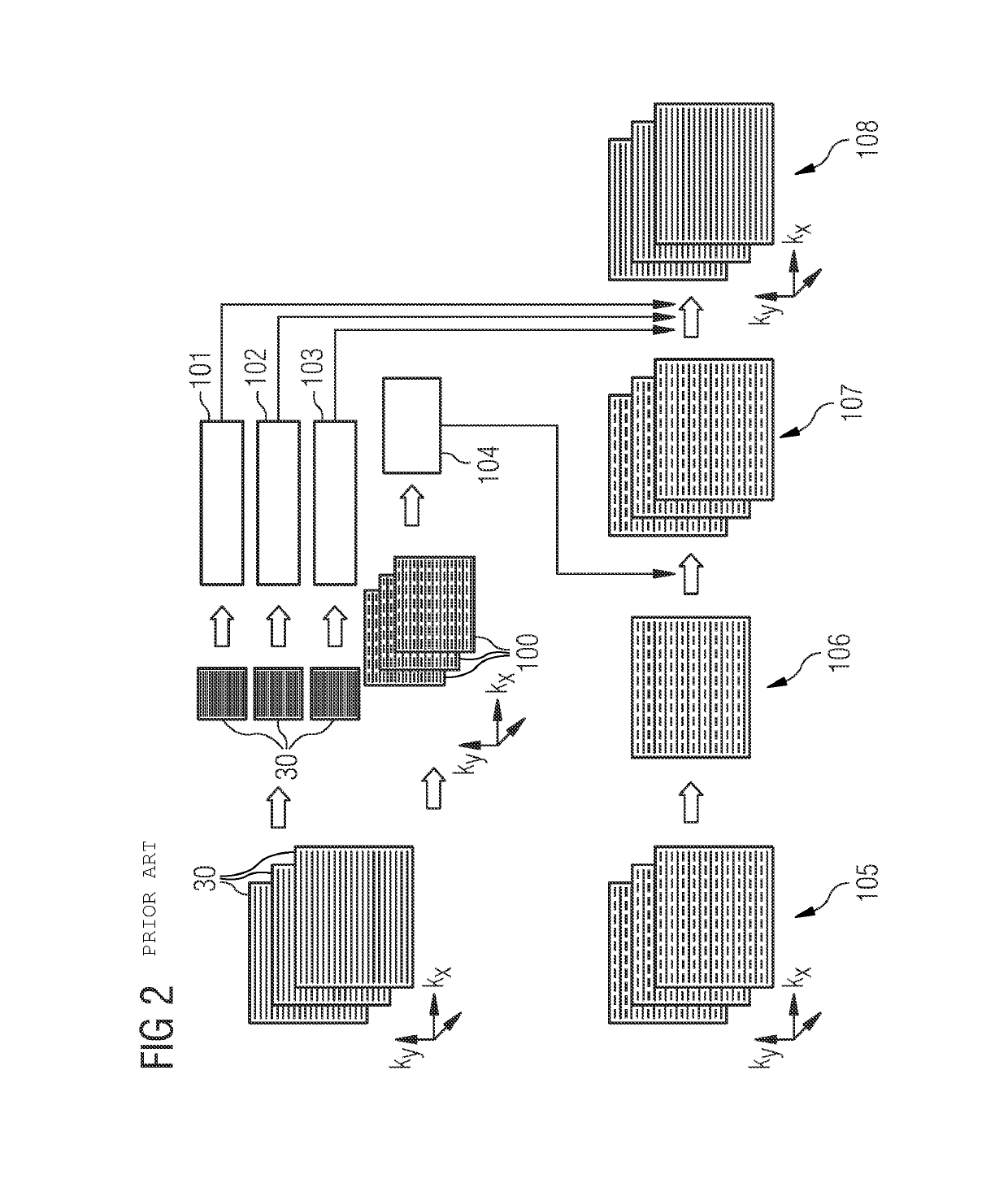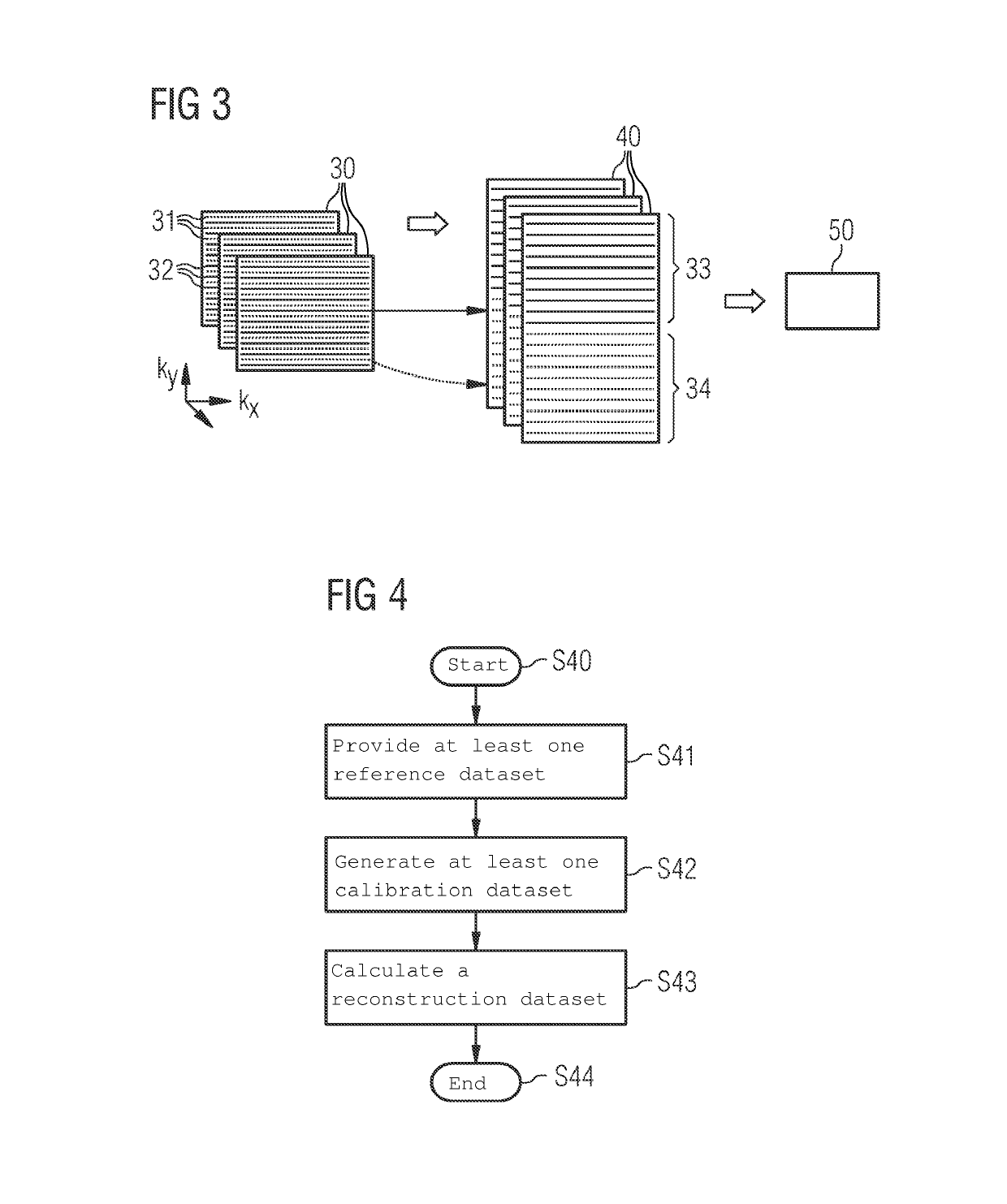Method for calibration in a magnetic resonance imaging procedure
a magnetic resonance imaging and calibration method technology, applied in the field of magnetic resonance imaging calibration in the imaging procedure, can solve the problems of reduced signal-to-noise ratio, reduced scan time, and increased so as to achieve faster generation of calibration, reduce the probability of patient movement, and improve the effect of accuracy
- Summary
- Abstract
- Description
- Claims
- Application Information
AI Technical Summary
Benefits of technology
Problems solved by technology
Method used
Image
Examples
Embodiment Construction
[0041]The present disclosure is described in greater detail below using embodiments with reference to the drawings. The same reference characters denote identical or similar elements in the FIGS. In addition, the FIGS. are schematic representations of various embodiments. Elements depicted in the FIGS. are not necessarily shown to scale. The elements shown in the FIGS. are instead depicted in a way that makes their function and purpose clear to a person skilled in the art. The connections shown in the FIGS. between functional units or other elements may also be implemented as an indirect connection, where a connection may be wireless or wired. Functional units may be implemented as hardware, software or a combination of hardware and software.
[0042]A magnetic resonance (MR) system is described with reference to FIG. 1, which system may be used, as explained below, to perform a calibration in SMS imaging.
[0043]A subject 12 under examination, (e.g., a person under examination), is move...
PUM
 Login to View More
Login to View More Abstract
Description
Claims
Application Information
 Login to View More
Login to View More - R&D
- Intellectual Property
- Life Sciences
- Materials
- Tech Scout
- Unparalleled Data Quality
- Higher Quality Content
- 60% Fewer Hallucinations
Browse by: Latest US Patents, China's latest patents, Technical Efficacy Thesaurus, Application Domain, Technology Topic, Popular Technical Reports.
© 2025 PatSnap. All rights reserved.Legal|Privacy policy|Modern Slavery Act Transparency Statement|Sitemap|About US| Contact US: help@patsnap.com



